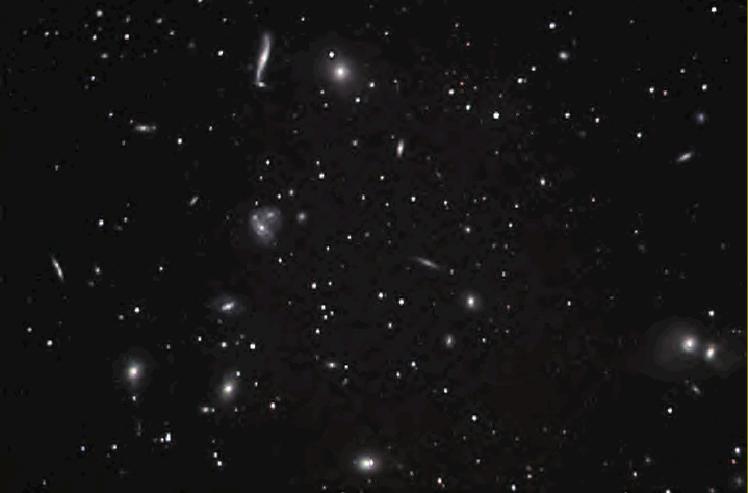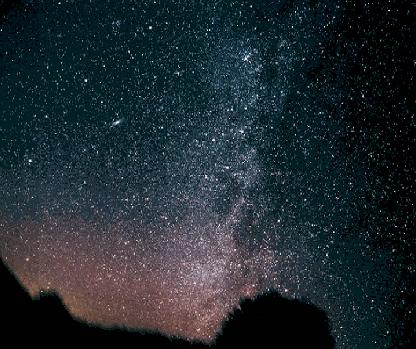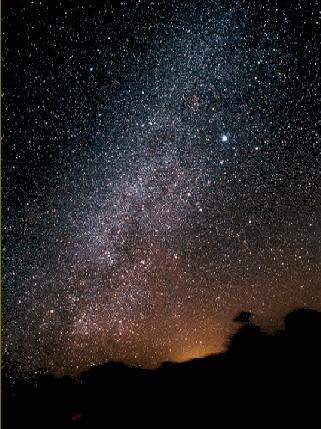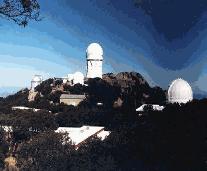

Have you ever wished you could drive up to a professional observatory and just use their big telescopes whatever way you want? This is not a total fantasy! Jack Kennedy and I did just this when we made our February trip to Tucson and YOU can too!
The National Optical Astronomy Observatories (NOAO) have several large Observatories in the US and South America. The Kitt Peak Observatory near Tucson Arizona is one of the largest. The Observatory maintains a very nice visitor’s center and offers tours of the various telescopes on the peak. This makes a nice afternoon by itself and I heartily recommend that you make the trip for this reason alone. So - how do you get them to let you use a scope? Well, it doesn’t involve hiding in the janitor’s closet until everyone goes home.

The Visitor’s Center maintains two outreach programs for the public. The first is called the “Night Observer’s Program.” The goal of this program is to have a mini star party with about 20 people. There is a charge ($25.00 each I think) for this program and it is well worth it. The fun starts about 4:30 in the afternoon and consists of a series of lectures that are equivalent to “Astronomy 101.” There is even a box lunch to ward off the “hungries.” Once it gets dark everyone is equipped with binoculars and the group goes outside to identify constellations. After the group becomes familiar with the evening’s constellations, they move to the telescope dome at the Visitor’s Center.
The Visitor’s Center is well equipped with a Meade 16” LX200 mounted in polar mode to a solid pier. This is housed in a large dome with benches for seating. They have ALL the goodies there, ST8E, lots of eyepieces, computer control system, “C” clamps... and it is wheelchair accessible.
The rest of the evening, until about 10:00 or so, is spent in the dome looking at whatever is up. Planets are popular but the great sky at Kitt Peak allows some wonderful views of deep sky objects. At about 10:00 PM everyone is escorted down the mountain, without headlights. (Sounds like an exciting trip!) This is a great program but you must have reservations. It fills up early and I don’t recommend just showing up and hoping to get a spot - that is rare indeed!
OK, so if everyone gets escorted down the mountain how do you get to use the telescope? If you get reservations well in advance you can participate in the “Advanced Observer’s Program.” In this program up to 2 people can stay for the rest of the night and use the 16” for any observing/imaging project that you want. All of the neat goodies are at your disposal as well as a “Telescope Operator” who knows how to make the most efficient use of all of the hardware and software. Yes, there is a cost for all this - $250.00. Yes, I felt that it was a bargain. When Jack and I were there we got the equivalent of a “Masters” course in color CCD imaging using the ST8E, and the SBIG color wheel. We also learned how to use the LRGB color method and DDP processing to bring out the best in our images. We also learned to use the AO7 active optical guiding unit for micro guiding. I have to complement Adam Block, our telescope operator. He was intimately familiar with both the hardware and the advanced computer processing techniques required to make “world class” images.
There are several “Telescope Operators” and they share this duty on a rotating basis. There is also an element of “competition” between these fellows to produce the best images possible. This is wonderful for the guest observer in several ways. It was a lot of fun listening to the exchange of banter in the evening as recent images were compared. The competitive element also adds to everyone’s skill level and makes the overall level of professionalism very high among the Telescope Operators.
Our evening started out cloudy. The NOP people even went home early after attempting to look at Jupiter and Saturn through small sucker holes. We nervously watched weather maps on the internet but Adam confidently predicted clear sky by 10:30. As predicted, by 10:30 we were setting up our image imaging run and checking the equipment out. Jack had spent a number of hours planning the list of objects that we wanted to image. Jack is the experienced CCD maven and I was happy to be able to rely on his experienced recommendations. After some discussions with Adam, we chose a small galaxy, with a distinct “S” shape as our first target - NGC 4535.
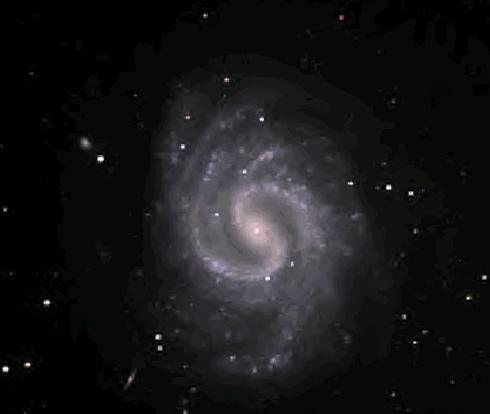
I went into this thinking that CCD is supposed to be easy. A few 5 minute exposures and onto another object - no problem. Man, I found out that taking “World Class” images is a different kettle of fish. If memory serves the 4535 shot has about 150 minutes of total exposure counting darks and flats. This does not include the time spend refining the focus, which was done several times during the imaging run and adjusting the balance for good tracking (this is where the “C” clamps come in). By the time all of the exposures were taken, and our questions answered, it was time for Adam’s lunch and our 3:00 AM snack.
After “lunch,” the Hercules Galaxy Cluster was well placed for imaging and the work began again. While the imaging was going on Adam demonstrated the advanced processing techniques necessary to finish these images off. What an interesting night and what a priceless leaning experience! Jack and I finally folded about 6:00 AM and we left Adam to cleanup the Galaxy Cluster image. After a nap we packed up and collected copies of the night’s work. I learned a lot here and I have a much greater respect for the work that goes into successful CCD imaging. I will do this again, perhaps doing film images instead of CCD, or maybe not - the CCD was fun. This is a wonderful program and I felt the cost was well worthwhile.
